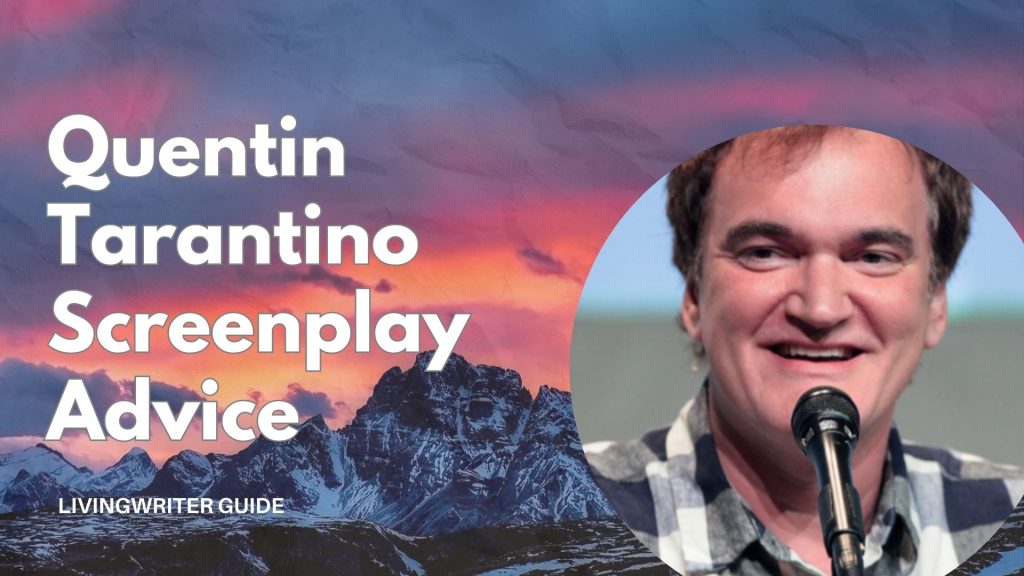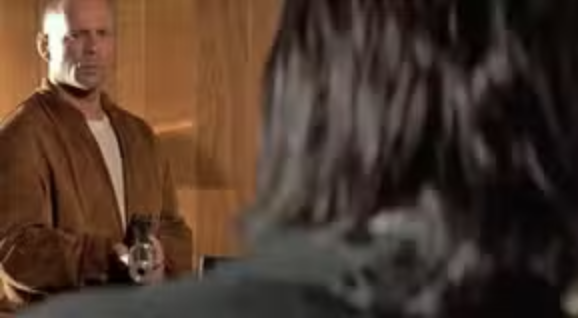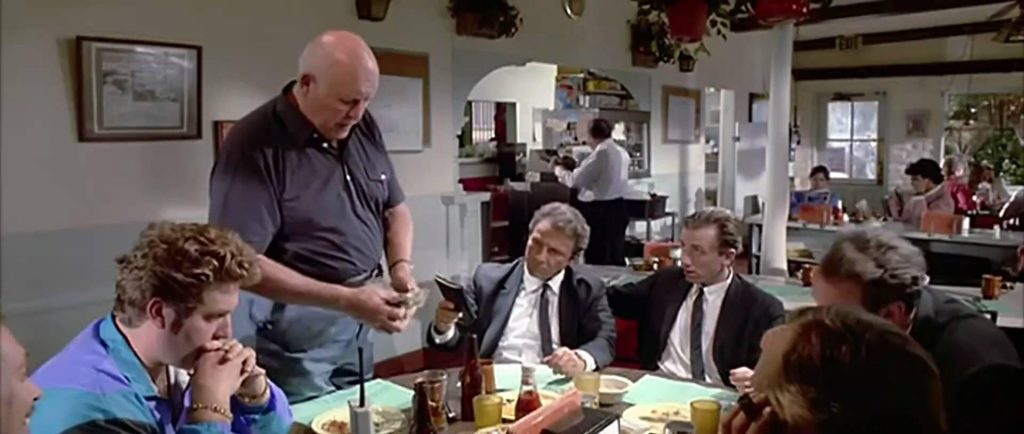Quentin Tarantino Screenplay Tips – Top 5

Quentin Tarantino is one of the most distinctive screenwriters of the last thirty years, not just for things like his dialogue, but for his entire approach to the craft of writing screenplays. Unlike many screenwriting teachers who preach rigid structures and formulas, Tarantino’s methods are more organic and character-driven.
Here are some of the most noteworthy things about how he writes, along with his advice and quotes. So, without further ado, let’s get into my top five Quentin Tarantino screenplay tips.
Table Of Contents
1. Characters First, Plot Later
“I’m trying to get to that place where now the characters are telling me [the story] and the characters are exciting me. It’s the characters who really write the piece.”
This is perhaps his most defining principle. Tarantino has said that he doesn’t start with a detailed plot outline. Instead, he focuses on creating complex, fully realized characters. He’ll write extensive backstories for them—even if that information never makes it into the final film—because he believes the characters will tell him where the story needs to go.
So, don’t get bogged down in plotting every beat in advance. Once you have a deep understanding of your characters, let them guide the narrative. This allows for unexpected turns and a more authentic story.

To do this, you can establish their core beliefs and then details around it (link here: Best 3-Step Method For Fictional Characters), create more Unique Characters With LivingWriter, or dive into Psychological Reasons We Love Fictional Characters.
2. The Power of Dialogue
“I have no problem relying on dialogue. It’s one of the reasons I can direct my material better than anyone else, because I have a confidence in my material that no one else would.”
Tarantino’s dialogue is his signature. He’s famous for long, seemingly aimless conversations about pop culture or mundane topics that serve to reveal character and build tension. He believes that if the audience trusts the storyteller, they will be happy to listen to these conversations.
You May Also Like: How To Write Dialogue In A Story
While your dialogue should “move the plot forward,” it’s perfectly fine to write dialogue that reveals who your characters are, what they care about, and their relationships with one another. Even a conversation about tipping at a restaurant can be loaded with character and subtext.
3. The Hands-On Approach to Writing
“You can’t write poetry on a computer, man!”
Tarantino famously writes his first drafts in longhand, using pen and paper. He refers to this as a “vomit draft”—a free-flowing, unedited outpouring of every idea he has. After this, he types the draft on a computer, which he sees as the second, more deliberate step of the process, where he can edit and refine the work.
Find a writing process that works for you and makes the act of creation enjoyable. Tarantino’s method is a reminder that slowing down and being more deliberate can yield richer results. The separation of the initial creative burst from the later, more structured editing process can be very effective.
And, of course, even Tarantino eventually uses some software (for screenplays, LivingWriter is the top choice of 2025) as he gets deeper into the process. This is particularly helpful for newer screenwriters who are still learning screenplay formatting and the common Screenplay Terms And Abbreviations.
4. Bending Genre and Structure
Tarantino’s films often blend and subvert genres. For example, he’ll take a “classic” heist movie (Reservoir Dogs) where there are countless things besides the heist that significantly contribute to the story. He also frequently uses a non-linear narrative structure.

Don’t feel trapped by genre conventions. Take familiar genres and put a unique spin on them. A good story is one that both fulfills and subverts the audience’s expectations. Depending on what genre you write, I have you pretty well covered on how to avoid common cliches with these guides:
5. Writing for the Reader
“Scripts are meant to be read. Movies are meant to be shot.”
While many of his scripts are written for himself to direct, Tarantino has emphasized that a script should be a joy to read in its own right. He often includes more prose and scene description than a typical spec script, making his screenplays feel almost like novels.
If your goal is to sell your screenplay, beyond the story itself, your priority is to get a producer or director to read your script and be entertained. Make the experience of reading your screenplay as engaging and cinematic as possible.
To help keep things engaging, I recommend that you give some attention to your individual scenes as opposed to the story as a whole. By understanding the purpose of a scene, you can make sure you get the most bang for your buck in terms of storytelling.
You May Also Like: How To Write A Scene – 10 Great Tips
Beyond that, a healthy dose of tension is your friend when it comes to writing for your reader. Tension is a topic in and of itself (and yes, it’s different than suspense), and I’ve covered it in depth here – Tension In Writing – A Complete 2025 Guide.